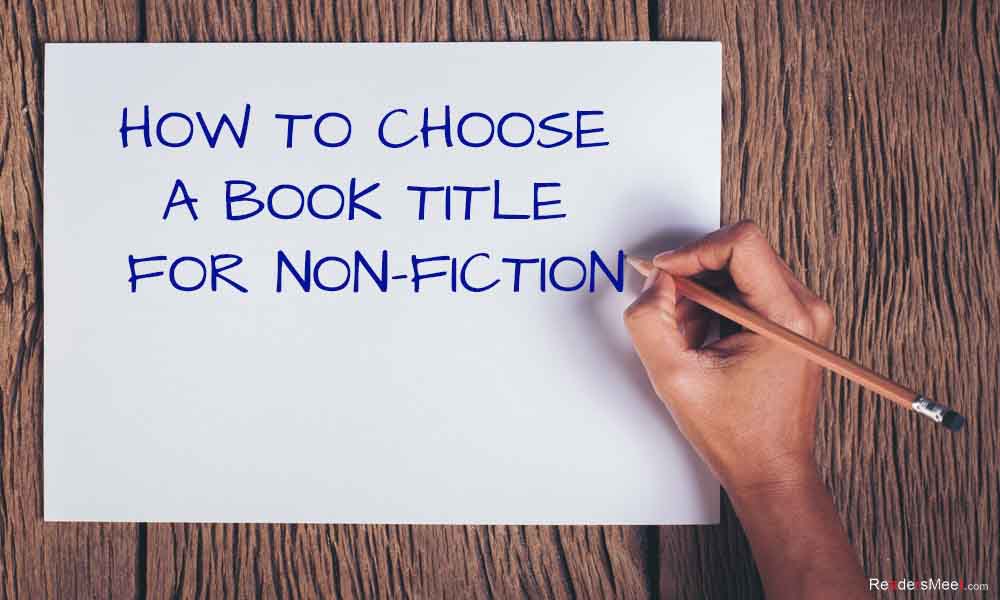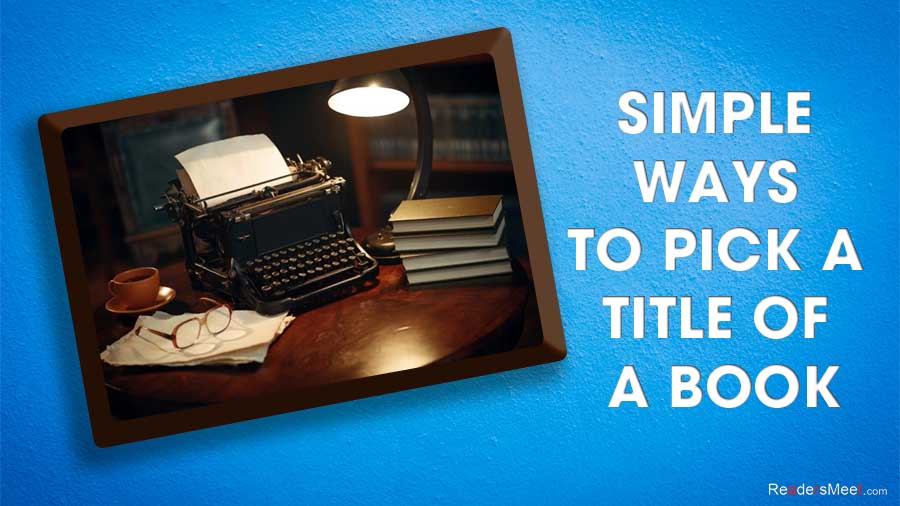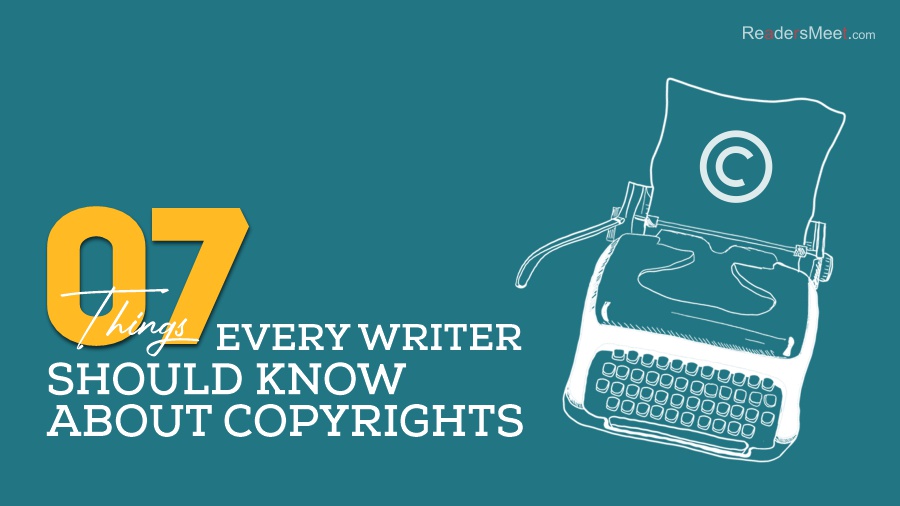Choosing a Book title can get tricky sometimes as you already have plenty of thoughts running in your mind. Some of you might just have completed your book or you are in the middle of your book or just written the first page, picking a title can take a lot of time.
As you all know that story revolves around their characters and incidents happening around but the book title is something that summarizes the whole story.
Ways to pick a title of a book
- Use a book title generator tool
- Write down the problem you’re solving
- Create a subtitle to clarify
- Make it memorable
- Make sure it’s genre-appropriate
- Create it to stir intrigue
- Include your character in the title
- Get feedback from your target audience
There are different title considerations for fiction and non-fiction; hence it will include two more topics:
How to choose a Book Title for Non-Fiction

To understand how one should choose a title for a non-fiction book, it’s important to know what the audience wants, and the readers are looking for a solution through non-fiction books.
Whether it is about losing weight, becoming maters in sales, or getting better at fostering relationships, all they are looking for is a solution to solve their problems through books.
#1 – Use a Book Title Generator Tool
Book title generator is usually the best tool that gives a wide range of options to choose from different names. However, some of the tools don’t satisfy authors’ taste and it gets difficult to choose titles.
Below are the best book title generators:
- Nonfiction- Title Generator
- Fantasy- Random Book Title Generator
- Fantasy- Fantasy Novel Title Generator
- Fiction- Create Your Own Story Title Generator
- Science Fiction- Pulp Sci-Fi Title-O-Tron
- Sci-Fi and Fantasy- UKRifer’s Book Title Generator
- Fiction- Story Toolz Half Title Generator
- Fiction- Adazing Book Title Generator
- Non-fiction- Portent’s Content Idea Generator
- Nonfiction- KopyWritingKourse Book Title Generator
- Nonfiction- Book Title Generator
#2 – Book Title Must Include a Solution to a Problem
The title should be clear which gives readers a proper picture of what they will achieve by reading the book. Experts say that a clear title gives prompting promises and guaranteed results will engage readers intact.
Important questions to keep in mind while creating a title:
- Are you teaching a desirable skill?
- Can personal discoveries impact someone’s life?
- Can a book solve a very difficult problem?
Some of the favorite book titles with clear pictures:
- Asperger’s Rules! How to Make Sense of School and Friendship by Blythe Grossman
- How Not to Die: Discover the Foods Scientifically Proven to Prevent and Reverse Disease by Michael Greger
- The 4-Hour Workweek: Escape 9-5, Live Anywhere, and Join the New Rich by Tim Ferriss
#3 – Use a Subtitle for Clarity
A great non-fiction title employs a subtitle to clarify what readers will be getting from the book.
Points to consider while creating subtitles:
- How can a subtitle further expand on achieving a desirable outcome?
- What are the biggest pain points that a subtitle can provide a solution for?
- How can it further address innovative solutions in the subtitle?
Below are books with some great subtitles:
- The Crossroads of Should and Must: Find and Follow Your Passion by Elle Luna
- Better Than Before: Mastering the Habits of Our Everyday Lives by Gretchen Rubin
- Work Rules! Insights from Inside Google That Will Transform How You Live and Lead by Laszlo Bock
#4 – Make Book Title Memorable
Catchy titles can be memorable, unlike boring ones. Hence it’s important to put effort to make the title more creative and fun. Usage of alliteration makes the title catchy and easier to read and remember. A memorable and light-hearted title adds additional characters to the book and also a great way to attract readers.
Points to consider while creating memorable titles:
- Will a fun title turn a normally boring subject into something more interesting?
- It Will adding humor to the title further entice readers?
- It Will a cleverly written title stand out from other books in this genre?
Some of the engaging book titles and subtitles:
- Me Talk Pretty One Day and Let’s Explore Diabetes With Owls by David Sedaris
- Trust me, I’m Lying: Confessions of a Media Manipulator by Ryan Holiday
- Freakonomics: A Rogue Economist Explores the Hidden Side of Everything by Steven D. Levitt
Experimenting with different types of styles and poll the audience to understand whether a comedic, shocking or even bizarre title would be attractive and target more audience.
It doesn’t matter which method works best on creating an attractive title for nonfiction books, but it is important to test multiple titles with a different audience to understand which book titles generate the biggest response.
Hence, getting good feedback is the best way to know which title fits perfectly for the book.
How to Generate Book Title Ideas for Fiction
Fiction titles are moreover like most creative ones than nonfictional ones. Still, an effective fiction title must attract the reader’s attention.
Fictional titles can be selected on random names; this should still catch the reader’s attention.
#5 – Titles should be Appropriate to its Genre
The novel title must use language that represents both the book genre and the target audience. Such a romantic book showcase dreamy language on other hand an action book can pose powerful words.
This concludes that it is very important to know the book genre and words that fit perfectly with the style of the title.
Points to consider for appropriate genre titles:
- What genre best fits this story?
- Which are the perfect choice words for the genre?
Below are the fictional titles based on genre:
- Ready Player One by Ernest Cline
- The Great Gatsby by F. Scott Fitzgerald
- The Godfather by Mario Puzo
#6 – Book Title Should Pique Reader’s Interest
One great fiction title must tease and leaves the audience wanting more. The audience needs to read the title and be forced to think that what is behind that great book cover.
Points to consider on how to pique interest with title:
- Which key components of the story best captivate readers?
- What emotions do you want readers to have once they read the title?
Below are the fictional titles that attract attention:
- Fahrenheit 451 by Ray Bradbury
- The Da Vinci Code by Dan Brown
- Fear and Loathing in Las Vegas by Hunter S. Thompson
#7 – Characters for Book Title Inspiration
One good book title captures the spirit of the protagonist. Some might use a hero’s name for the title.
Some combine the hero’s name with their special qualities to inform the audience about the protagonist’s accomplishments.
Points to consider while including a character as a title:
- Between the hero and villain, who impacts the story more?
- Are there any stunning qualities from your characters that will draw a reader’s emotion?
- Can the plot of the story be summed up as a title?
Fictional Books which used characters for their title:
- Harry Potter (Literary Series) by J. K. Rowling
- Bridget Jones’ Diary by Helen Fielding
- Ender’s Game by Orson Scott Card
Considering which characters conveys the best story will be seen in the title. But it is also important to include creative words or themes to showcase the character’s unique qualities or the journey.
#8 – Getting Feedbacks from Target Audience
The people, who will know if the title fits best, are the people who would pick the book out of a lineup. This can be difficult if a writer is not a part of a writing group or isn’t active on social media.
Few tips for getting book title feedback:
- Create a poll in a Facebook writing group
- Reach out to some friends or family you know read in your genre and ask for their feedback
- Post a poll on Twitter with your various options
- Do all of these in order to get a wide variety of input
Your bestselling book is on its way! Finally, the title of the book depends on the author. Following the steps and guidelines, one can generate a great title for a book that suits best. Most importantly the title should attract the reader’s attention; this will help the book to be the bestselling book instantly!!
Also Read:- Submission Guidelines For Your Manuscript



